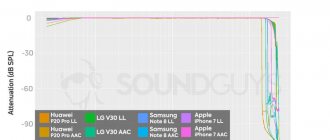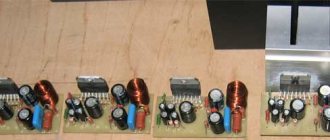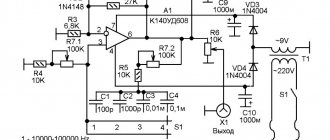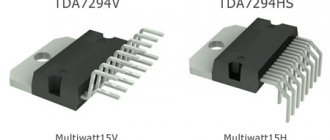Some people understand high-end news as a new vinyl record as thick as a pie. Bob Stewart, the founder of Meridian Audio, from the very beginning of the 80s was not interested in fetishes, but in very specific digital technologies, albeit invisible in work. DVD-Audio, Meridian DSP speakers and now - the announcement of the MQA format. “DSD isn’t enough for you, they’ll force you to buy new decoders again,” you can already hear the muttering of skeptics. However, let’s try to figure out what we were missing in the classic PCM method and why we need another lossless one today.
Preserve overtones
In October 2014, a report entitled “A Hierarchical Approach to Archiving and Distribution” was presented at the professional exhibition AES Convention in New York. In an interlinear translation, the title sounds a little wild - “Hierarchical method of archiving and distribution,” but feudalism has nothing to do with it.
Bob Stewart talks about MQA at a conference during Munich High End 2015
If you compare 16-bit/48 kHz and 24-bit/96 kHz recordings, the latter is more euphonious. Everyone knows this. But anyone who has stored audio on a hard disk knows that increasing the bit depth, alas, inflates the size of the file many times over. A 24-bit track will take up one and a half times more space than a 16-bit track. If you record audio at 96 kHz sampling, the file will be twice as large as at 48 kHz. Well, for 192 kHz you can do the math yourself. One album, it turns out, will take 1.5 or even 2 gigabytes, even if it is archived in FLAC (i.e., reduce the volume by 40 percent). When played, FLAC is decompressed into an uncompressed PCM stream, which at 24/192 can reach data densities of up to 9.2 Mbps. Is it a lot or a little?
Bluesound Powernode 2 amplifier/wireless streamer supports MQA decoding
For a CD, this value ranges from 0.4 to 1.4 Mbit/s. The DSD counterpart has 5.6 Mbps. For DVD images, the bitrate ranges from 4 to 9.8 Mbps, but for standard definition digital television this figure is much lower. For Youtube and other stream videos, more efficient codecs such as H.264 are used, which make it possible to obtain an acceptable HD picture with a resolution of 720p at 2.5 Mbit/s. In any case, they try to keep the bitrate lower, because not every user is on a fiber optic line. In a word, that’s why Internet radio stations bypass the idea of high-discrete audio the tenth way.
Audiophile player Pioneer XDP-100R became the first portable gadget with MQA support
At the same time, the spectrum of such HD phonograms, with all due respect to them, turns out to be almost half empty. These are the costs of the linear PCM encoding method. It’s a pity for the space, but I really want to preserve the overtones!
Our scientific speakers at the AES Convention, and we are talking about Robert Stewart and his colleague Peter Craven, noticed that formally the dynamic range of those same ultrasonic overtones is extremely small. This means that the audio stream can be digitized in a nonlinear way, based on a certain mathematical model.
The essence of MQA coding: information above 48 kHz is “hidden” in the data array below the noise threshold
For demonstration, a diagram of a musical fragment recorded at a maximum bit depth of 24 bits/192 kHz was provided. The vertical Y axis of the graph represents the peak level of the music signal and surrounding background noise, while the horizontal X indicates the frequency of the band. In our case, with a sampling rate of 192 kHz, the extreme point of the X-axis is 96 kHz. With these characteristics, we will capture a complete picture of what is happening during recording.
Repeating the MQA procedure - now audio data with a resolution of 192 kHz and 96 kHz is packed into a file with a bit resolution of 48 kHz
At the same time, the graph shows that starting from 55 kHz the useful signal practically merges with the noise. To illustrate this, the sound of a string orchestra was used as an example, but Stewart emphasizes that, in general, all musical performances fit into this peculiar “triangle”. The maximum signal amplitude is observed in the bass and gradually decreases to minimum values in ultrasound. And now, attention, encapsulation!
Will Apple support MQA?
While we were able to get native support for high-resolution audio on Android devices from Samsung, Sony, and LG, the Apple iPhone was only capable of properly playing high-resolution music through a third-party app and a portable DAC.
There have long been rumors that Apple plans to deliver high-resolution audio through Apple Music, but we don't. our breath. Instead, we developed an effective (if not particularly elegant) workaround.
Will Apple one day be able to use MQA and release music in high resolution? This seems unlikely in the near future, but as they say, never say never.
One thing is for sure: for anyone interested in audio quality, MQA is a technology that demands to be heard. Want to know more? Go to the MQA website here.
Audio origami
In computer science and programming terminology, encapsulation means packaging a certain function or data in a common array. In our case it looks like this. With the highest sampling frequency of 192 kHz, only the spectrum above 48 kHz is digitized. Since the dynamic range of the signal here is tiny and barely distinguishes itself from noise, digitization will take up little space. Now this region is simply transferred and included (i.e. encapsulated) by the MQA codec into the ultrasonic noise region between 24 and 48 kHz somewhere below the noise threshold, at a level of –130 dB. The place is absolutely unnecessary and inaudible to anyone, but, as you can see, with the help of mathematics you can hide various useful things in it.
At CES 2016, the HTC One A9 smartphone announced support for the MQA encoding format
Something similar was done on HDCD discs. Only then was the data from the four least significant bits of a 20-bit analog-to-digital converter encoded in the noise of the 16-bit signal. Here we have a 24/96 record with encapsulated useful elements from 24/192. But this is not the end. Why not play hide and seek again?
Auralic Aries high-end network streamers support MQA decoding
This time we take and encode the section from 24 to 48 kHz and hide what we have done in the baseband below the quantization noise at –144 dB. As a result, we have an audio stream with 24-bit/48 kHz characteristics, from which the MQA decoder, during playback, will restore the entire high-rez with 192 kHz sampling. It resembles a nesting doll, but Bob Stewart prefers the Japanese interpretation of this phenomenon - “audio origami”. Now all that remains is to further compact the result in the traditional lossless way, as FLAC and similar compressors do.
results
Unlike my previous test comparing Hi-Res files with MQA decoding on TIDAL obtained directly from a digital rip, do not forget that these results depend on the quality of the DAC/ADC combination used. This is why I took the time to describe the comparison methodology above. Essentially, the signal will show some degree of the limitations of the DAC/ADC process, including noise characteristics, which I will try to include where I can.
To answer the above questions, I'm going to start with a few comparisons between 4 samples:
A. The Brooklyn DAC, which reproduces the original DXD track (24 bit/352.8 kHz), is the “reference”.
B. Brooklyn DAC, reproducing an MQA stream decoded by the TIDAL service interface, is “soft MQA”.
C. Brooklyn DAC, which uses the built-in MQA decoder for playback - “iron MQA”.
D. Brooklyn DAC, which uses Tidal decoding during playback, and then its own MQA decoder - “software-hardware MQA”.
Take a look at sample D. According to my friend, the Brooklyn DAC will recognize the partially decoded 88 kHz version from TIDAL (MQA marketing copy calls this the "MQA Core" output) and will then decode it, and probably also Internal upsampling up to 24-bit/352.8 kHz While this conversion is taking place, the MQA indicator in “Brooklyn” is red (in normal standard mode it is green or blue).
Let's try to answer several questions at once. Note that I listened to each track and already had my own subjective impressions. But so that you can really objectively evaluate what you hear, we’ll run a special Audio DiffMaker utility for each comparison (to clearly show what the “residual” difference is in the first 30 seconds of music playback). I suppose this is the only way to understand the similarities and differences in sound, even if you are going to listen to it purely for yourself.
Here are the settings that DiffMaker uses for recording - these are basically the default settings:
Audiophile functionality
Thus, the final product will have a bitrate slightly higher than that of uncompressed PCM on a CD. And you can already live with this and distribute it in real time. At the same time, the developer has provided backward compatibility. MQA files will be played back without proprietary decoders, only the base 16-bit/48 kHz stream will be played back, and everything hidden will go to the drain. Actually, a similar mechanism operated with the mentioned HDCD discs. They could be listened to on regular CD players, minus the magic of the Pacific Microsonics filter.
Meridian Exploper 2 - the very first device on which the MQA decoder worked
We can only hope that the Meridian project does not suffer the same fate. In any case, the main trump card of MQA is not even audiophile qualities (we’ll talk about them below), but functionality. The record company now does not have to duplicate the publication in several formats. Within a single file, the MQA user has the ability to select the quality level. One of the first to show interest in the new Meridian product was the large British media service 7digital.
And one more aspect, now sound. It’s too early to judge now, because the sandpiper will always praise its swamp. Robert Stewart insists that in the case of direct conversion to MQA, the process of digitization and transient decoding is as close as possible to the human perception of analog audio. Eyewitnesses to Meridian presentations have nothing but good things to say about the MQA demos. We hope that in the near future we will have the opportunity to compare the same fragment in MQA and in the now “good old” RSM 24/192.
What is MQA?
MQA aims to "fundamentally change the way we all love music." It is a method of digitally capturing and storing original master recordings as files that are small enough to be downloaded or streamed, without the audio sacrifices traditionally associated with compressed files.
MQA claims that its tracks use similar files. bandwidth up to that required for CD-quality streams. So if you can stream Tidal's Hi-Fi tier with relative ease, then the new Tidal Masters tier using MQA shouldn't be a problem.
- 14 of the Best Music Streaming and Virtual Concerts to Watch in Self-Isolation










